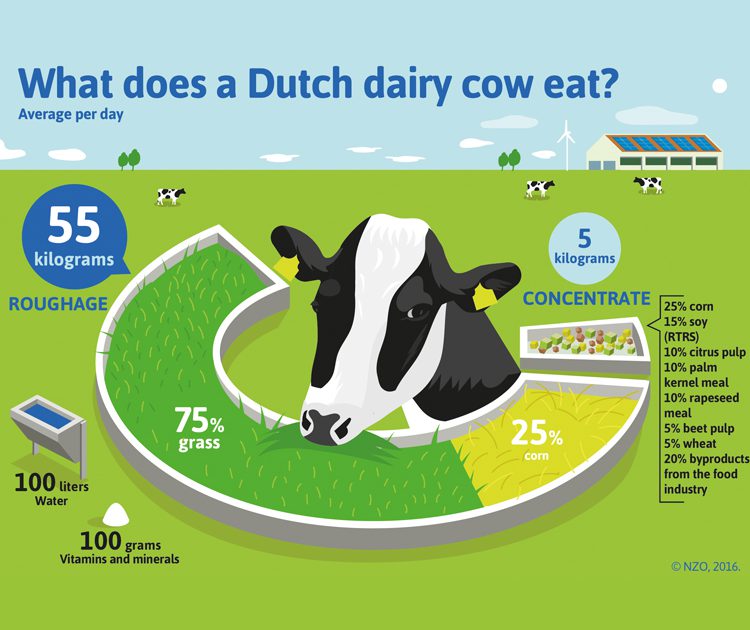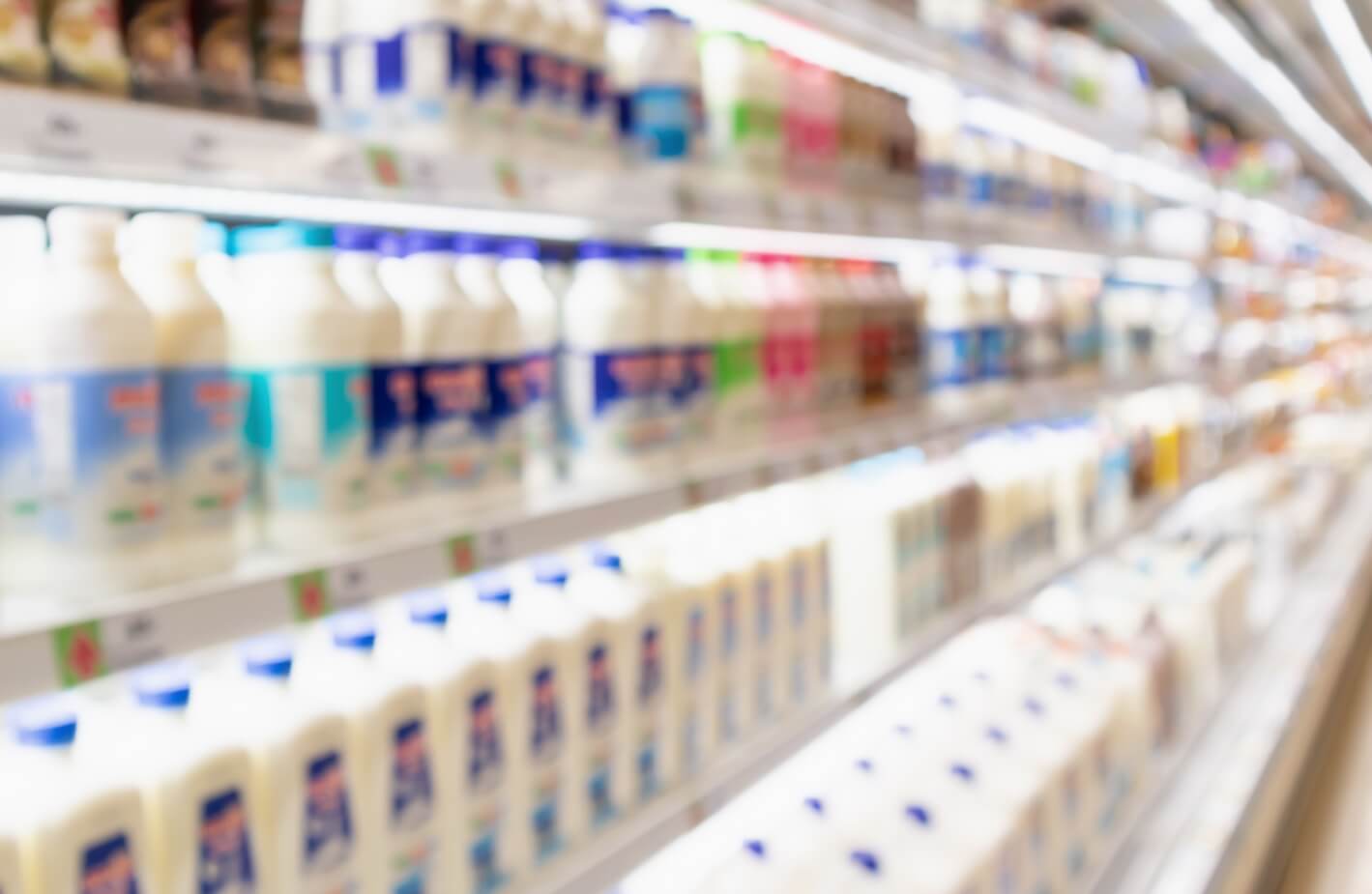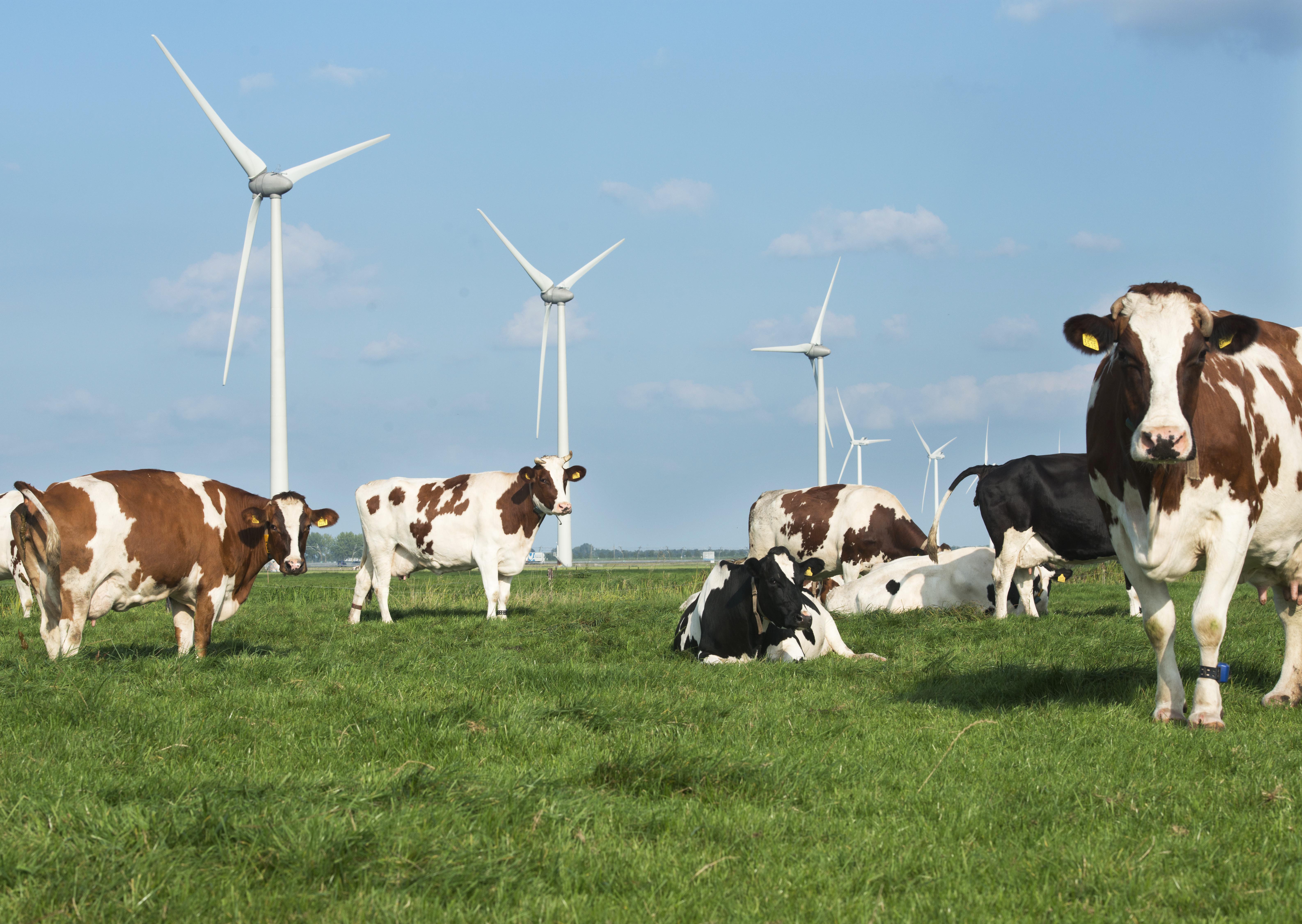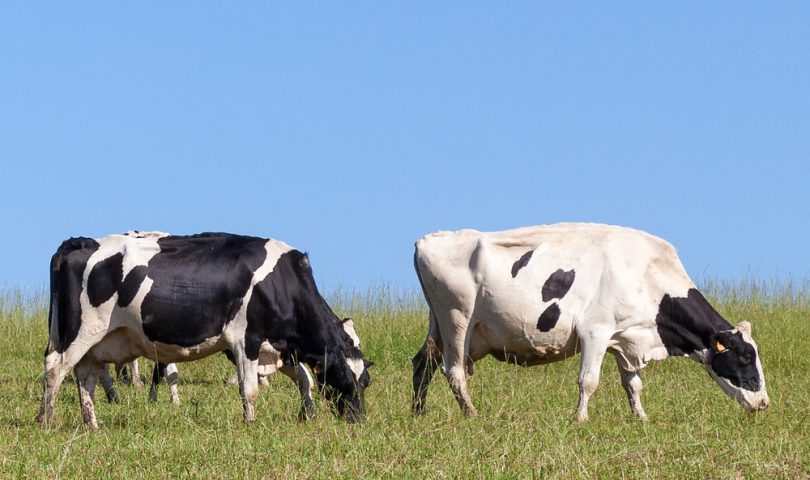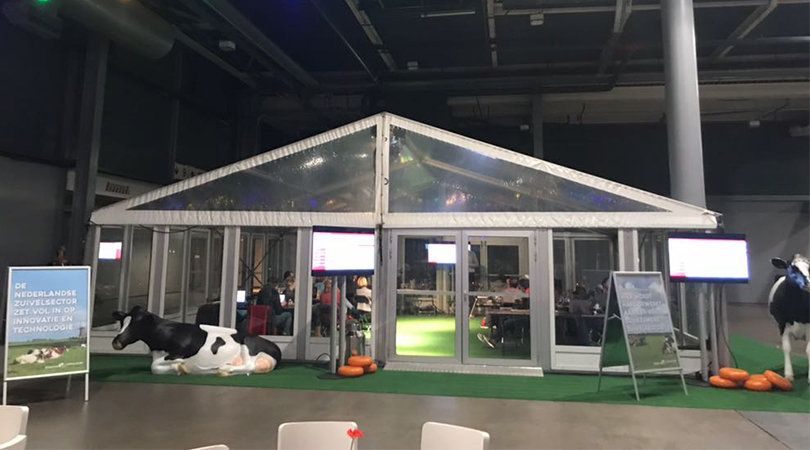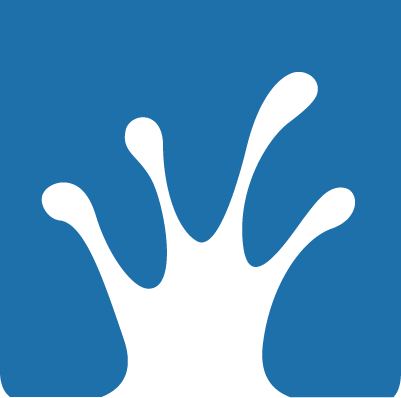
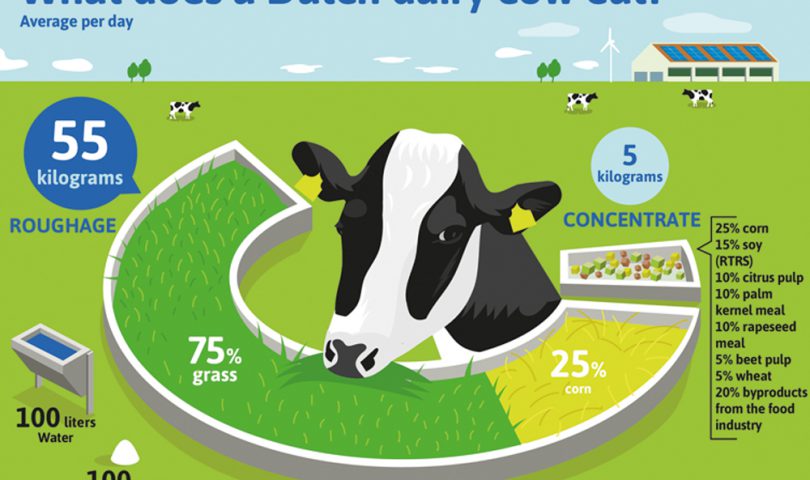
Sustainability
News overviewDutch dairy the first to transition to 100% responsible soy
In 2015, the Dutch dairy chain completely met its soy demand by purchasing responsible soy credits. According to Nevedi, the Dutch Feed Industry Association, animal feed companies purchased RTRS Credits equivalent to approximately 822,000 tons of responsible soy last year. This means that the dairy chain realized its goal to reach 100% responsible soy in 2015. The Dutch dairy chain is the first sector in the world to cover its entire soy demand with credits for responsible soy. This transition was made possible in consultation with the World Wide Fund for Nature (WWF), Solidaridad and Natuur&Milieu.
Responsible soy meets the criteria set by the Round Table on Responsible Soy (RTRS) or its equivalent. RTRS-certified soy production protects natural environments and respects human rights. Around the world, soybean farming goes hand-in-hand with deforestation, destruction of important natural areas, irresponsible use of pesticides, and the displacement of local farmers by large-scale soybean plantations.
Sandra Mulder, senior advisor for soy at the WWF, comments, “We’re glad that the dairy sector has kept to its 2011 promise to transition to 100% responsible soy. This is good news for the ecosystem in South America, which has been threatened by the expansion of soybean farming. In the WWF Soy Scorecard published today, we studied how companies are taking responsibility for improving the sustainability of their chains. We found that several dairy players active in the Netherlands have taken a leading role here.”
Gert van der Bijl, soy program manager at Solidaridad, adds, “The Dutch dairy sector has shown that it takes sustainability seriously – and that its responsibility to do so is an international one.”
Animal feed suppliers buy credits for responsible soy
Only animal feed suppliers that buy credits for responsible soy are allowed to supply feed to Dutch dairy farmers. Dairy companies have added this requirement to their delivery terms. Animal feed suppliers must be certified by GMP+. Independent inspectors, on behalf of GMP+, check whether the suppliers have purchased enough credits to match their sales to Dutch dairy farmers.
2015 was a transition year to achieve full certification of all animal feed suppliers. In consultation with the WWF, Solidaridad and Natuur&Milieu, the animal feed sector decided to make a realistic estimate of the purchased and required credits for 100% responsible soy in 2015. At the request of the Sustainable Dairy Chain (NZO and LTO), Nevedi calculated that in 2015, 701,695 tons of soy were purchased for dairy cattle feed by its members. Based on this calculation, it was concluded that the goal of 100% responsible soy was reached in 2015.
Annual evaluations to transition to physical supply
The Dutch dairy sector currently meets its soy demand by purchasing RTRS Credits, the so-called “book and claim” method. The sector, however, hopes to transition to “mass balance”, or the purchase of actual soy that is an approved mix of RTRS-certified soy and non-certified soy. The dairy sector requires relatively high volumes of soybean hulls, which can only be consumed by ruminants. Because one ton of responsible soybean hulls requires large quantities of RTRS soybean plants, the switch to “mass balance” is relatively expensive. The Dutch dairy sector is working with European dairy companies to increase the international demand for RTRS-certified soy. Each year, a working group, together with the dairy sector, community organizations and the animal feed sector, evaluates whether enough RTRS-certified soy is available to be able to transition from “book and claim” to “mass balance”.
Exploring alternative sources of protein
Another step towards the improved sustainability of the sector is to promote the development of alternative sources of protein. The dairy and animal feed sectors have joined forces to study the use of alternative proteins and explore the possibilities. They are also looking at the advantages and disadvantages of their use. For example, there are tests being conducted into the development of European soy. While the first signs are positive, more research is needed before European soy can be cultivated on a large scale.
Cows eat mainly grass, but their feed also includes soy
A cow eats about 60 kilograms of feed per day (55 kilograms of roughage and 5 kilograms of concentrate). Their diet is made up mainly of grass, but it also includes other roughage such as corn and residues from the food industry. Many cows are also given concentrate, which often includes processed maize grain, citrus pulp, beet pulp, palm kernel meal, rapeseed meal, and soybeans. The average Dutch cow eats 0.75 kilograms of soy each day (1.25% of its total diet).
